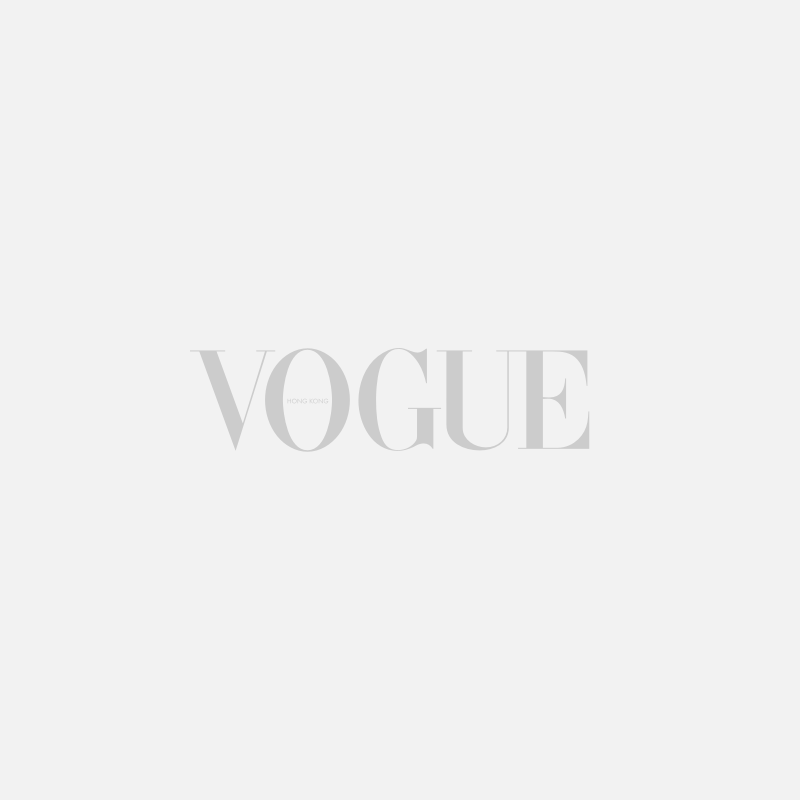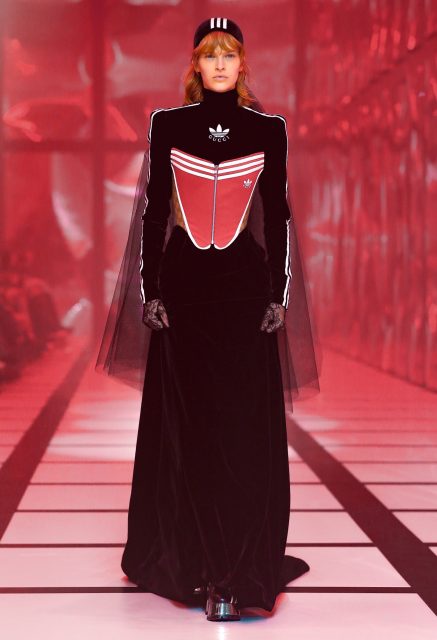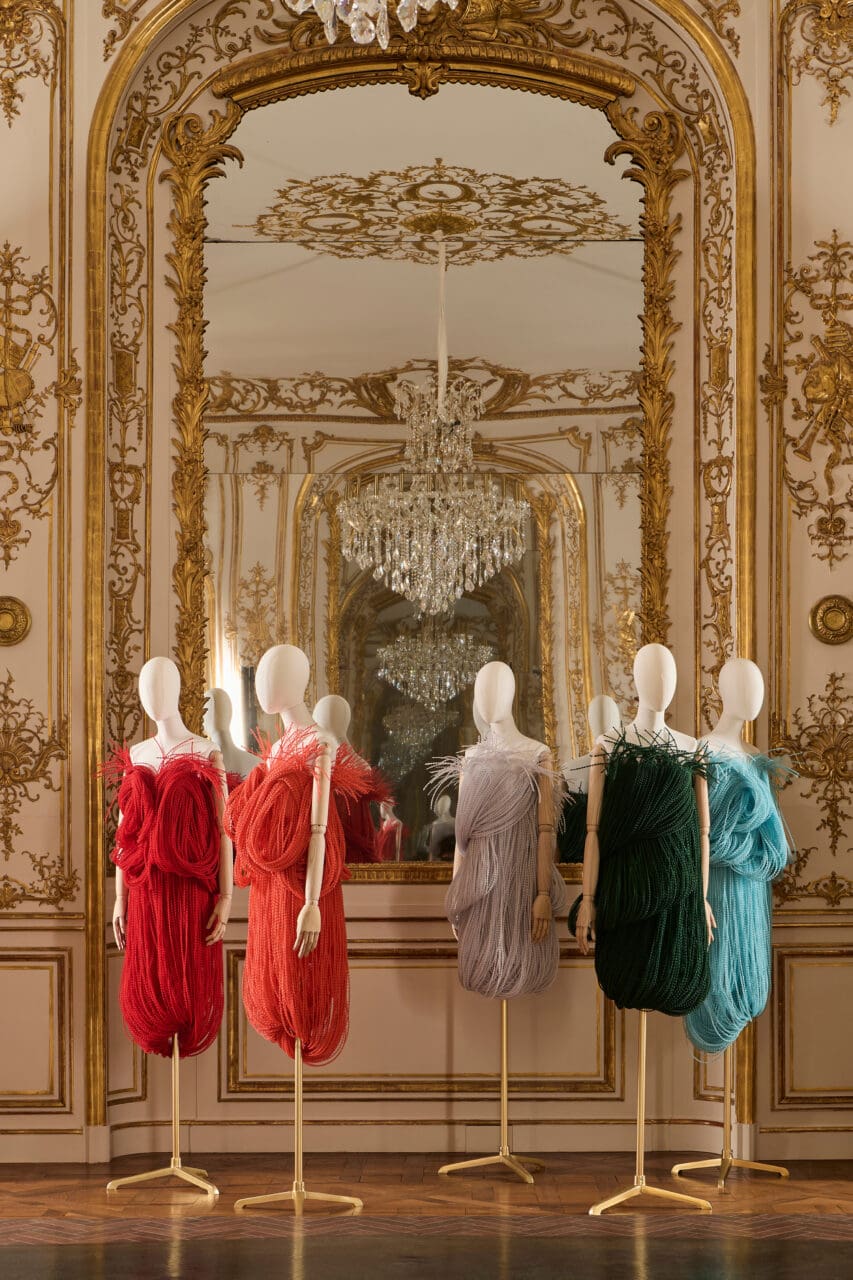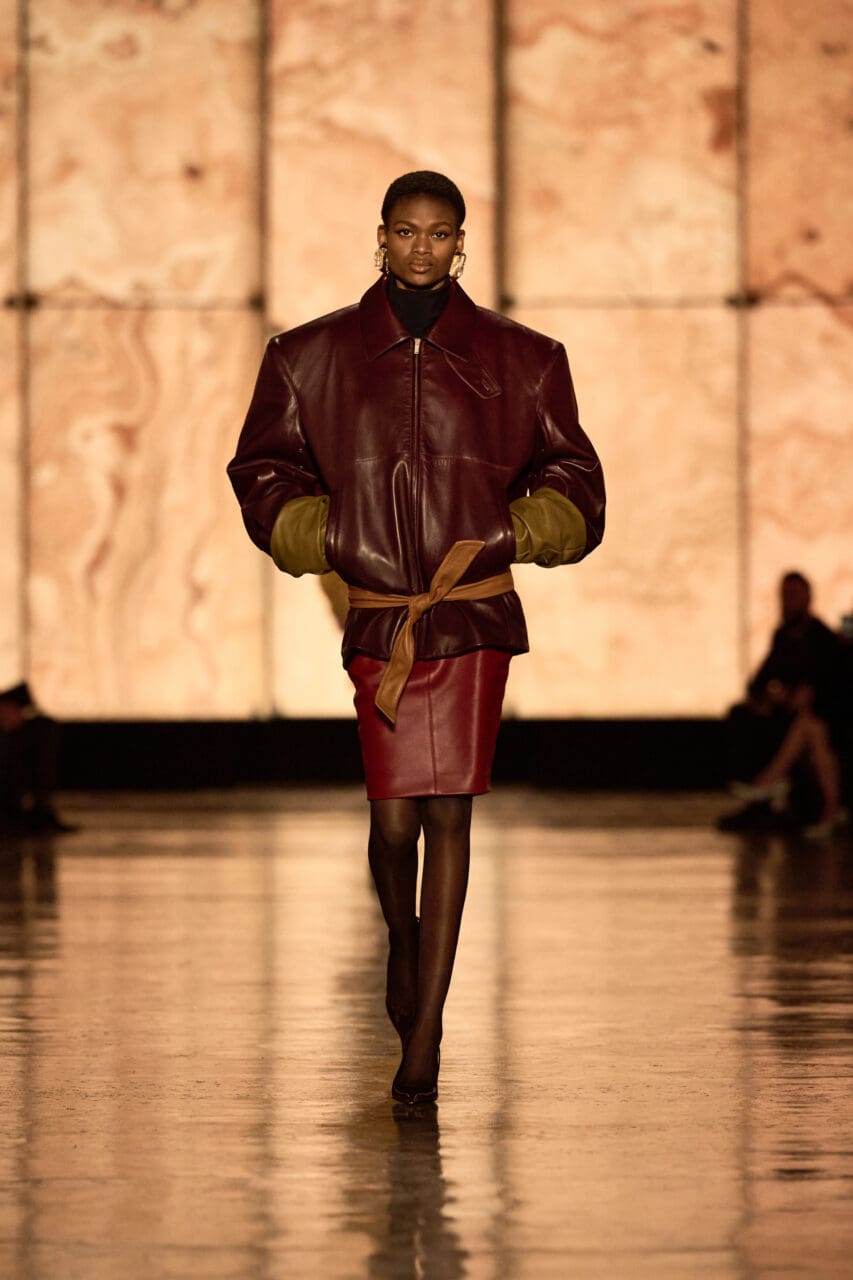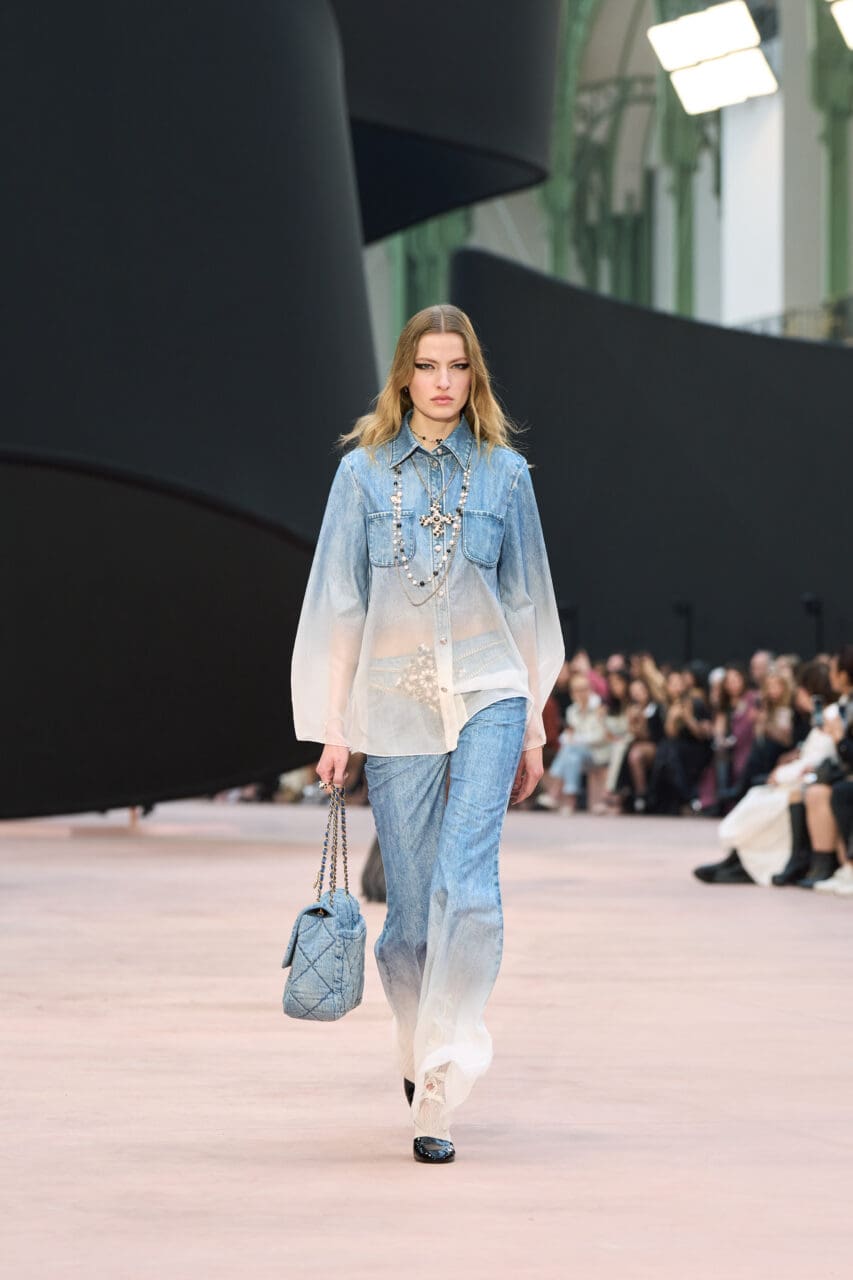From body-deforming silhouettes to shoes that look like bags, British Vogue’s fashion critic Anders Christian Madsen brings you five things to know about autumn/winter 2022’s natural-vs-unnatural Loewe show.
The show drew parallels to Jonathan Anderson’s debut collection
This summer, it’s fifteen years since Jonathan Anderson showed his first J.W. Anderson collection. It took place in the On/Off showroom at The Royal Academy, and his brand was only six months old. It was a small proposal of just a few pyjama-like men’s garments with bug prints, hand-made jewellery woven from pearls and bugs trapped in resin, and bags constructed in blue cubic silk jacquard. “We’re capturing nature and denaturalising it, and letting it become something different. It’s quite sinister, but I think sinister is important. It’s nature but nature that’s become twisted,” he said in a press release at the time. Today, Anderson’s post-show words at Loewe entirely echoed that sentiment: “I wanted something primal, and I wanted an idea of the Industrial Revolution, and the idea of those two things meeting.”
It was the natural vs. the unnatural
Fifteen years after his debut, Anderson’s work still obsessively studies authenticity versus artifice. It was evident in every look he sent down his Loewe runway – a brown box built inside the Tennis Club de Paris adorned with replicas of giant pumpkins created in leather by Anthea Hamilton – from the manipulated organic-ness of the moulded leather dress that opened the show to the 3D-printed tech tops realised in humble, natural felt. “I feel like this is about unknowingness. This sounds very Irish,” Anderson said, “but I liked the idea that it felt a bit Seamus Heaney.” The Irish poet’s depictions of the natural versus the unnatural underpinned the designer’s debut collection in June 2007, which he named Death of a Naturalist after Heaney’s seminal collection of poems.
Silhouettes were body-deforming
“It was the idea of looking at the birth of man, at evolution, and the idea that we grow out of things and then we grow back into things,” Anderson said, almost confirming the self-referential thread some of us detected in the Loewe collection. Looking back at his debut show – although much less avant-garde and artistically-inclined than his work today – there were inklings of the investigations that still consume him. The bugs trapped in resin balls employed in his early jewellery resonated in the balloons trapped in the folds of dresses in today’s show, or even in the stilettos and child-sized cars immured under body-conscious dresses, deforming the natural silhouette.
It had an air of fetish
“I like the idea that by pushing a silhouette, you’re pushing it towards something that can be nonsensical; things that can be irrational, and the meeting of two things that are pleasantly disturbing,” Anderson said of the weird shapes that embodied the collection. He covered the torsos of models in second-skin transparent latex, distorted and elongated what looked like a traditional shearing boot into a malformed trouser manifestation, and forged what might have been an oversized plastic mould of a lip into a bustier. Throughout, materials and technique played ping-pong between the natural and unnatural, while motifs bordered the confrontational, the weird, and the fetishistic.
Anderson turned bags into shoes
Anderson’s accessories captured the organic-vs.-artificial spirit of the collection in ‘bag shoes’ borrowed from January’s men’s collection, which literally looked like models were walking with handbags on their feet. Stiletto sandals were tied with enormous, sharp aluminium bows, making the soft and glamorous almost dangerous. Bags reiterated the leather-centric values of the collection in matte, almost medical colours that went with its fetishistic aroma, while a handbag covered in shearling played with the idea of ‘useless’ fabrication (because, well, a handbag doesn’t get cold).
Editor
Anders Christian MadsenCredit
Photo: Courtesy of Gorunway